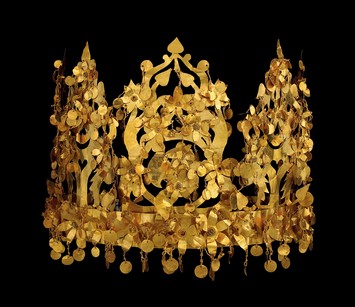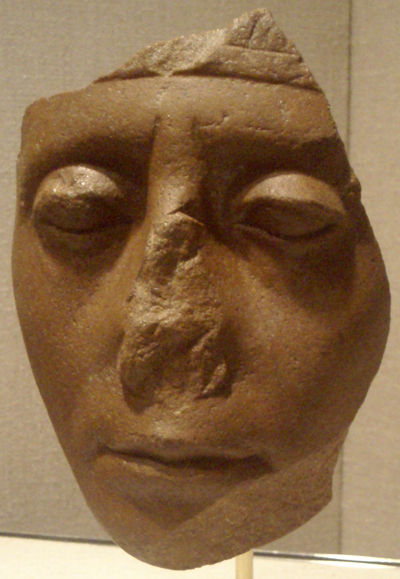, of Australian National University, has said that Andean coastal South American Pottery, possibly Incan, has been discovered on the Galapagos Islands. The islands arenearly 1,000kilometers off the coast of South America, and its been widely believed, until now, that the first people to reach the Galapagos were European explorers in 1535.
Dr. Haberle, along with Professor Atholl Anderson, is leading a team of scientists who are looking for evidence that people voyaged on the Galapagos Islands before Europeans arrived in the 16th century. Theyve been re-analyzing all the pottery that has been discovered in the Galapagos Islands so far. Dr. Haberle said that only a small amount ofcoastal South Americanpottery has been found in this assemblage.
“Overwhelmingly the pottery we find is derived from the European period” says Haberle. However, recent finds may pre-date the European period, suggesting that South Americans may have visited the islands.
He said that, “we’re talking about only a very few pot sherds left (which) may be quite old but they need further analysis to actually confirm that.”
However, he qualifies that the findings are far from conclusive: “We have pottery that may be of some antiquity, but we cant actually put a firm date on it that would place it prior to the European phase.”
The pottery appearsto have been made in the time that theIncaexisted (16th century and earlier). “It’s kind of difficult, but it’s most likely to be during the Incan period,” he said. (Theyre) not decorated or anything, theyre plain sherds, not particularly diagnostic.
Dr. Haberlesays that it’s possible that this potterycould have been picked up in South America by European explorers and brought to the island by them. “We may find an old pot sherd in the Galapagos (but)it doesn’t mean it was brought out there in antiquity,” he said. “They could be 1,000 years old, but Europeans coming along 500 years ago, raiding these burial sites (inSouth America) -they can actually pick up some of these older pots anduse them as well.”
We need to do more work to actually confirm or deny.
He said that there is no sign that these pot sherds were made in the Galapagos themselves. “There doesn’t appear to have been any types that were actually made in the Galapagos Islands, that’s the other important point.” This means that these pottery sherds would have been imported from South America.
The team has also been analyzing the pollen record of the island in an effort to see if anyone was there before Europeans. So far the results have not yielded evidence that South Americans, or Polynesians, ventured out to the Galapagos islands before Europeans arrived.
If the pottery does turn out to be from an ancient voyage it will bequite adiscovery. People in Peru did have vessels that (in theory) are capable of reaching the island as Thor Heyerdahl showed with his Kon Tiki voyage. However, it has not been proven that they travelled out this far.
The Kon Tiki was a raft that, in April 1947, Heyerdahl sailed from Callao Peru to Raroia Island in French Polynesia, a journey of 4,300 nautical miles. The raft was modelled on the typeused byPeruvians, just beforeEuropeans arrived. It was made up of nine balsa trunks tied together with hemp roaps. It also had a 15 by 18 foot sail.
Haberle said that the small amount of pottery, and the raft-based sailing technology of the Inca,would suggest that if these voyages occurred, they were infrequent. It would have been a very rare event for such a vessel to have gone out to the Galapagos, he said. “They certainly had large vessels that went up and down the coast of South America but they don’t seem to be suitable for long-distance ocean voyages.”
Thor Heyerdahl did conduct archaeological work on the Galapagos nearly 50 years ago. He claimed to have found South American pottery remains, but his work, along with his theory that Polynesia was settled by South Americans, has not been widely accepted.
 Theyve faced bombs, the Taliban and civil war, and now Afghanistans ancient treasures have a new challenge a Canadian museum strike.
Theyve faced bombs, the Taliban and civil war, and now Afghanistans ancient treasures have a new challenge a Canadian museum strike. Senwosret III probably isnt the first person you think of when it comes to the Nobel Prize, but this ancient Egyptian Pharoah was making a significant contribution to future archaeology long before
Senwosret III probably isnt the first person you think of when it comes to the Nobel Prize, but this ancient Egyptian Pharoah was making a significant contribution to future archaeology long before  They also found what appears to be a hunting blind – a pile of rocks used to hide from the animals, so that they do not see that you are hunting them until its too late.
They also found what appears to be a hunting blind – a pile of rocks used to hide from the animals, so that they do not see that you are hunting them until its too late. Starting this Saturday, the second oldest copy of the Ten Commandments will go on display, at the
Starting this Saturday, the second oldest copy of the Ten Commandments will go on display, at the  The
The  The document came to light abouta year ago whenscholar Ada Yardeni, of Hebrew University, wrote about it. In Biblical Archaeology Review he said that, If it were written on leather (and smaller) I would say it was another Dead Sea Scroll fragmentbut it isnt. It is written on gray-coloured stone!
The document came to light abouta year ago whenscholar Ada Yardeni, of Hebrew University, wrote about it. In Biblical Archaeology Review he said that, If it were written on leather (and smaller) I would say it was another Dead Sea Scroll fragmentbut it isnt. It is written on gray-coloured stone! There is some interesting news coming from Tayinat that Heritage Key will be reporting on soon as part of a larger article.
There is some interesting news coming from Tayinat that Heritage Key will be reporting on soon as part of a larger article.